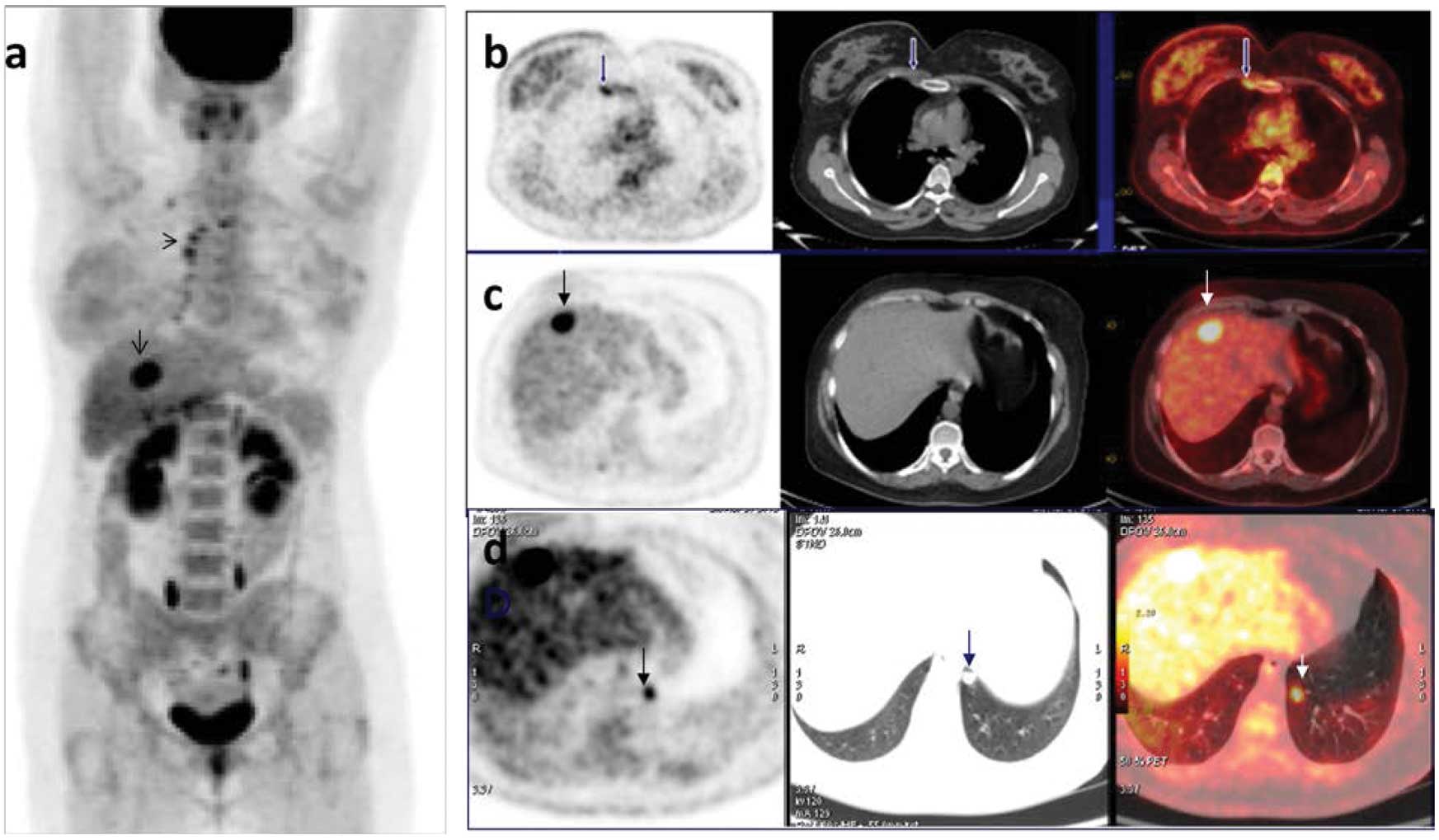Clinical impact of 18F-FDG PET/CT on initial staging and therapy planning for breast cancer
- Authors:
- Published online on: August 9, 2012 https://doi.org/10.3892/etm.2012.659
- Pages: 693-698
Metrics: Total
Views: 0 (Spandidos Publications: | PMC Statistics: )
Total PDF Downloads: 0 (Spandidos Publications: | PMC Statistics: )
Abstract
The purpose of this study was to determine the clinical significance of 18F-FDG PET/CT on initial staging and therapy planning in patients with invasive breast cancer. One hundred and forty-one consecutive, biopsy proven preoperative and 195 postoperative high-risk breast cancer patients who were referred for PET/CT for initial staging were included in this retrospective study. The clinical stage had been determined by conventional imaging modalities prior to the PET/CT scan. Of the 141 examined preoperative patients, 19 had clinical stage I (T1N0), 51 had stage IIA (12 T2N0 and 39 T1N1), 49 had stage IIB (2 T3N0 and 47 T2N1), 12 had stage IIIA (11 T3N1, 1 T2N2), 2 had stage IIIB (2 T4N1) and 8 had stage IV. PET/CT modified the staging for 26% of stage I patients, 29% of stage IIA patients, 46% of stage IIB patients, 58% of stage IIIA patients and 100% of stage IIIB patients. PET/CT scans detected extra-axillary regional lymph nodes in 14 (9.9%) patients and distant metastasis in 41 (29%) patients. PET/CT scans detected multifocal lesions in 30 (21%) patients, multicentric lesions in 21 (14%) patients and malign foci in the contralateral breast (bilateral breast cancer) confirmed by biopsy in 5 (3.5%) patients. Of the examined 195 postoperative patients PET/CT detected axillary lymph nodes in 22 (11%) patients, extra‑axillary regional lymph nodes in 21 (10%) patients and distant metastasis in 24 (12%) patients. PET/CT findings altered plans for radiotherapy in 22 (11%) patients and chemotherapy was adapted to the metastatic diseases in 24 (12%) patients. PET/CT was revealed to be superior to conventional imaging modalities for the detection of extra-axillary regional metastatic lymph nodes and distant metastases. These features make PET/CT an essential imaging modality for the primary staging of invasive breast cancer, particularly in patients with clinical stages II and III.










